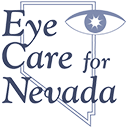Bifocal and multifocal contact lenses are designed to give you good vision when you reach your 40s. Beginning at this age, you may need to hold reading material – like a menu or newspaper – farther from your eyes to see it clearly. This condition is called “presbyopia.”
Bifocal and multifocal contact lenses are available in both soft and rigid gas permeable (GP) materials.
Bifocal contacts lenses (like bifocal eyeglass lenses) have two powers – one for seeing clearly far away and one for seeing clearly up close. Multifocal contact lenses, like progressive eyeglass lenses, have a range of powers for seeing clearly far away, up close and everywhere in between. (“Multifocal” is also used as a catch-all term for all lenses with more than one power, including bifocals.)
Most people who try multifocal contact lenses are happy with them. But some compromises may be necessary when you wear these lenses. For example, your distance vision with multifocal contact lenses may not seem clear enough, or you may have trouble with glare at night or not being able to see small print.
In some cases, a person with presbyopia may prefer monovision or modified monovision. Both of these fitting strategies use single vision lenses – that is, lenses that each have only one power – instead of multifocals.
In monovision, you wear a single vision contact lens on one eye for your distance vision and a single vision contact lens on the other eye that has a prescription for your near vision. In modified monovision, you wear a single vision “distance lens” on one eye and a multifocal contact lens on the other eye to help you see better up close.
To determine the best contact lenses for your vision needs when you reach “bifocal age,” call our office for a consultation.



